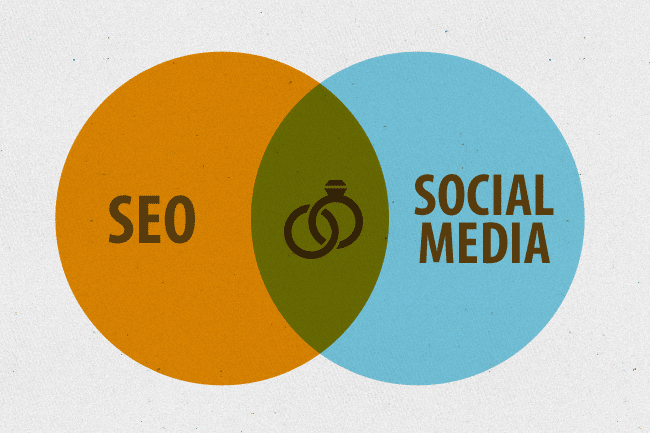- In the present scenario, the digital world is constantly evolving. Businesses should use every available tool in order to stay competitive. This can be achieved by using two powerful techniques, SEO and social media, which are usually treated as separate entities. The combination of these two strategies can majorly increase your digital growth. Furthermore, using professional SEO services, social media marketing services, and following a content marketing guide play a major role in assisting businesses to optimize their online presence. By using SEO & social media, businesses can increase their visibility, drive more traffic, and improve engagement.
What is SEO & Social Media?
- SEO refers to search engine optimization. It is common practice to optimize websites and online content to enhance a brand’s visibility and ranking in Google’s search engine results pages. The main aim of SEO is to improve online traffic to a website by making it attractive for Google web crawler.
Social media Role in SEO
- The role played by social media in driving SEO, however, has an impact on the factors that contribute to effective rankings on search engines. While social signals such as likes, comments, and shares are not considered as direct ranking factors by Google’s algorithm, they can still affect SEO. Social media platforms offer a medium for brands to share their content, and drive traffic back to their websites. This rise in traffic signals search engines regarding the relevancy and popularity of the content, which indirectly impacts SEO.
How does SEO & Social Media Balance Each Other?
- SEO & Social media balance each other out by increasing a brand’s online reach, digital presence, and drive engagement. While both of these have different strategies, their combination can create a myriad of benefits. Here is how they work best together:
Increasing content reach
- Social media platforms act as distribution channels for content that is created with SEO. Sharing blog posts and infographics on platforms such as Facebook, LinkedIn, and Instagram elevates the exposure to content and increases traffic to the website. Viral and engaging content on social media can indirectly enhance SEO by gaining backlinks from other sources.
Generating backlinks
- Social media also helps content to reach relevant influencers and publishers who will link it to their own websites. These backlinks are a crucial factor for SEO.
Social listening
- Social media insights such as trending topics, and audience preferences can inform SEO techniques by recognizing relevant keywords as well as new content ideas. This makes sure that both channels are catering to increasing user satisfaction.
How to Optimize Social Media for SEO
- To optimize social media for search engine optimization, incorporate these strategies to improve the visibility of social media content in social platform searches as well as traditional search engine result pages. Here is how to do it:
Keywords placement
- Use target keywords strategically in captions, alt-text for videos, and images, and hashtags will enhance the visibility of the content. Keywords should be effectively aligned with the content topic as well as an intended audience to enhance discoverability on social platforms and even on search engines.
Add alt-text and subtitles
- Use alt text to describe the content of the images correctly and include relevant keywords while describing the content. This will improve accessibility and assist platforms to understand what content is about. Shareable content also increases visibility, can lead to backlinks from external websites, this benefits SEO.
Promoting website content
- Repurpose old blog posts and other website content into bite-sized social media posts linking it back to the original source. You can also use relevant call to actions in posts to increase traffic back to the website.
Use hashtags
- Brands can also use a combination of popular, branded, and niche hashtags directly in the captions. Limit hashtags to at least 3-5 per post for relevancy and avoid spammy practices.
Produce high-quality content
- Brands should focus on creating engaging content that encourages users to like it, share it, and comment on it. Shareable content also improves visibility, which will lead to effective backlink generation from third-party websites, this indirectly benefits the SEO.
Strategies to Maximize SEO & Social Media Synergy
- Incorporate these strategies to enhance the synergy of SEO & social media.
Keyword placement
- Search for relevant keywords using SEO and use them in social media posts to improve discoverability on both platforms. Brands can also partner with influencers who will share the content on their social media profiles with their audience, this will lead to more backlinks and better visibility.
Engagement
- Create content that will compel users to interact with it, such as like, share, or even comment on it. While these factors do not directly impact the SEO, they can increase traffic and also improve engagement metrics. You can also include links to your website in your social media posts to increase traffic and signal to search engines web crawlers that your website is relevant.
Cross channel
- Create an effective digital marketing plan that combines SEO & social media strategies to increase discoverability and drive engagement.
Content distribution
- Use social media channels to distribute and share SEO-enriched content in the form of blog posts and videos to navigate traffic back to your website. Partnering with relevant influencers will also help a brand to reach a broad audience base and will generate backlinks from trusted sources.
Evaluating Success
Main metrics for SEO
- Organic traffic- Evaluate the number of visitors coming to your website by unpaid search results. It will showcase the effectiveness of your SEO efforts in increasing visibility and clicks.
- Rate of conversion– Evaluate how many visitors are taking desired action like purchases, or even sign-ups, showcasing the profitability of your SEO efforts.
- Web components– Showcase how frequently a website appears in search results relative to the competitors, providing insights into overall reach.
- Keyword rankings– Track a website’s position for target keywords in the search engine results pages. High rankings showcase better optimization for those terms.
- Search visibility– Showcase how regularly a website appears in search engine results when compared to competitors, providing insights about overall reach.
Main metrics for social media
- Reach- Evaluate the number of unique monthly users who see your content. This helps in evaluating audience size and effectiveness of content distribution.
- Growth rate– Assess how quickly social media following is increasing over the course of time, showcasing the success of your content in gaining new followers.
- Referrals– This shows how social media platforms are increasing traffic to your website, helping you to focus on high-performing channels.
- Engagement rate– Keep an eye on interactions such as shares, likes, and even comments related to followers or impressions. A high engagement rate showcases resonating content.
Conclusion
- The combination of SEO & social media has proven to be a game changer for brands looking to expand their online reach. A well-created content strategy integrates keyword-filled content, social engagement, as well as data-driven insights, which can produce impressive results. To increase your brand reach through SEO, contact Pentra SEO services and our team will help you to level up your content game through SEO.
- Contact us and our team of experts will get back to you in 24 hours.






